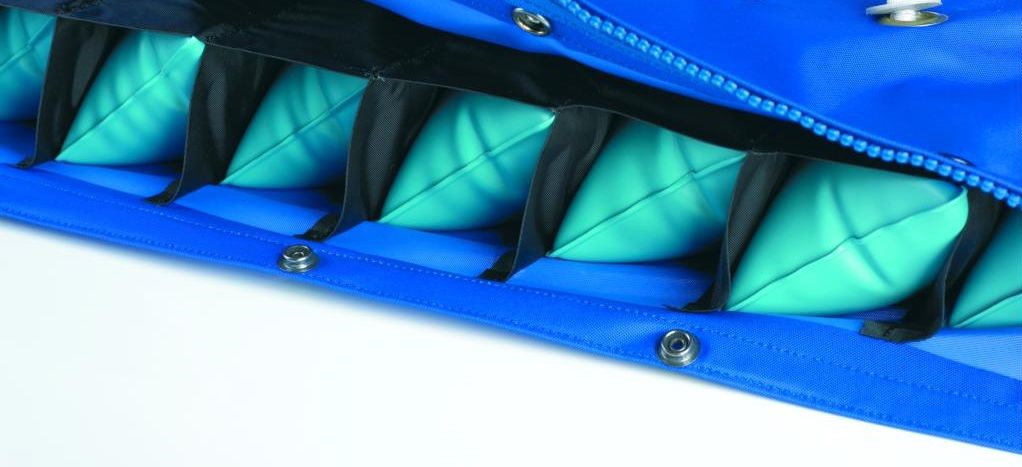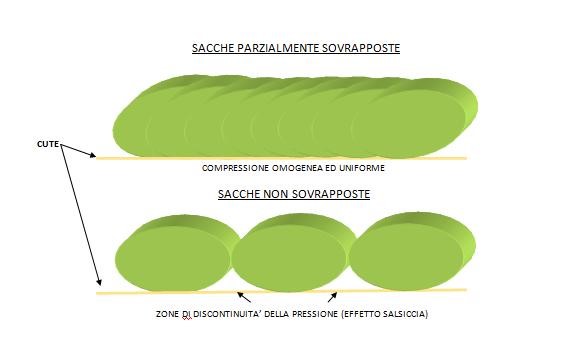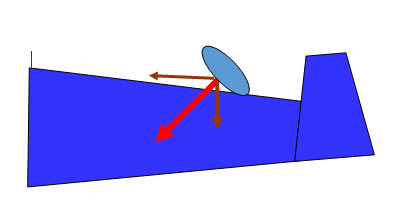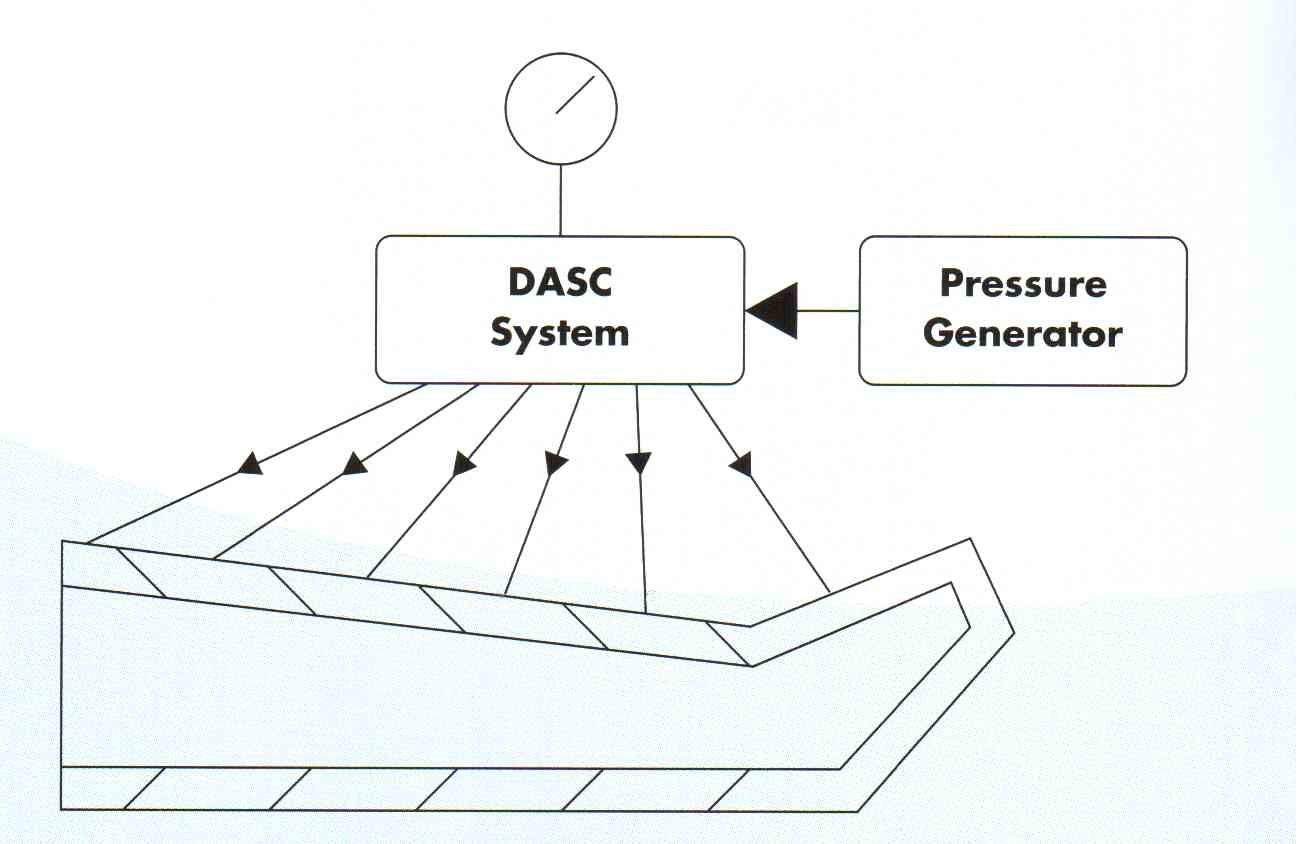Fisiopress produces three different professional equipments:
- FP 50
- FP 250 DIGITAL
- FP 1000 DIGITAL
The production of these different devices is essentially determined by the analysis of the different application and practical needs that the various operators may have related, above all, on the treated pathologies .
First of all, let's see the characteristics of these devices: what they have in common and what differentiates them.
COMMON CHARACTERISTICS TO ALL THE DEVICES
Let's start from the common characteristics which are the strengths of Fisiopress projects:
- Real sequential cycle
- Partially overlapped internal pneumatic sacs
- D.A.S.C. (Distribution through internal communicating sectors)
- Display of the real pressure applied
REAL SEQUENTIAL OPERATING CYCLE
The operative cycle represents the sequence of operations that the device performs and consists of two distinct phases: the compression and the decompression phases whose length is respectively 24 seconds and 6 seconds.
The real sequential term expresses the modality in which the compression phase takes place: it begins with the inflation of the first pneumatic chamber (the most distal or peripheral one) which in the case of the leg sleeve corresponds to the foot, while in the case of the arm sleeve is the hand, and continues with the inflation of the second chamber (the next one in the periphery-center or distal-proximal direction) keeping the first chamber under pressure.
It still continues with the inflation of the third chamber, then the fourth, always keeping the previous ones under pressure, up to the last chamber of the garment (leg or arm). At this point the deflation of the chambers takes place (decompression phase) for 6 seconds, and then the compression phase starts again.

The term “real” is added to “sequential” to differentiate this cycle (recognized as valid in international scientific literature) from others whichwhich inflate only one sector at a time (inflating of the first sector, inflating of the second sector and deflation of the first, inflating of the third sector and deflation of the second, etc….).
PARTIALLY OVERLAPPED PNEUMATIC SACS
In all Fisiopress systems, the internal pneumatic bags are contained in special housings inside the garments (leg sleeve, arm sleeve) which keep them parallel and partially overlapped.

The partial overlapping determines a continuity in the progressive application of the pressure, eliminating any discontinuity, between sector and sector, which would create an accumulation of liquids between a compressive sector and the following one if there was no OVERLAPPING . The image below gives a very precise idea of what has been said:
 The description how the difference between garments with partially overlapping internalpneumatic sacs and garments with parallel internal pneumatic sacs work on treated limb. The pressure is "spread" in a very different way.
The description how the difference between garments with partially overlapping internalpneumatic sacs and garments with parallel internal pneumatic sacs work on treated limb. The pressure is "spread" in a very different way.In the application of pressure the partial overlapping system guarantees the necessary continuity for a perfect thrust in distal to proximal direction, set by the previously described sequential operative cycle. In this way, partial stagnation of liquids in the intermediate areas between pneumatic bag is avoided. Another important consequence of the partial overlapping is the way the pneumatic bags are arranged during the sequence of compressive phases. The following image gives a precise idea of how pressure is applied:

The partial overlapping causes that the pneumatic compressive sac to be placed obliquely with respect to the skin where the pressure is applied, in such a way that the pressure vector has two components: a radial one (perpendicular to the skin) and a tangential one to the limb itself.
The resulting compression allows an excellent distribution of the pressure along the depth of the area where it is applied and at the same time a correct thrust in the desired direction. From a maintenance point of view, the internal structure of the terminals allows, if one of the internal pneumatic sac wears out over time, their simple replacement without having to change the whole garment, thus permitting a maintenance with negligible costs.
Replacing the pneumatic bag is a simple, easy and immediate operation and can be performed by the same operator who uses the device without any additional cost for a specialized technician or long waiting times. The immediate availability of replacement pneumatic bags has been a Fisiopress prerogative for years and a source of pride for the company and customer satisfaction.
DASC SYSTEM (Distribution through inner communicating sectors)
This internal Fisiopress hardware is a exclusive project and has been studied to perform a homogeneous pressure in all sections of the garment so that it adapts itself to the geometry of the limb where is applied, while maintaining equal pressure in all sections.
In fact D.A.S.C. system eliminates any possible pressure discontinuity along the full length of the treated limb, allowing effective thrust along the emptying direction.

The DASC system works in this way: during the sequential compression phase, once the first sector has been inflated, the inflation of the second one starts which is in communication with the first sector. The air can flow between one sector and the other, and perfectly keeps homogeneous the pressure between the two sectors. The same occurs when inflating the third sector which is joined to the first two, keeping the pressure homogeneous between all the three sectors and so on up to the last sector.
DISPLAY OF THE REAL PRESSURE APPLIED
This is an important point. Being certain that the pressure displayed is the real applied is fundamental for a device that uses the pressure as a therapeutic element.
The pressure value displayed on the graphic scale or via the analogue manometer is exactly the one applied. The instrument directly reads the pressure on all the pneumatic bags inflated at the moment.
In fact the D.A.S.C. , by connecting between them all the sectors as the pressure wave progresses, ensures that the real pressure read is common to all the inflated pneumatic bags.
CRITERIA FOR SELECTING DIFFERENT DEVICES. WHICH ONE TO CHOOSE ?
The first evaluation criteria of a device could be the number of its outputs and the consequent subdivision of its garments into sectors: the greater the number of sectors and the more evenly the pressure is applied and the greater the effectiveness.
However, since there are different problems to deal and different operational requirements, let's go into more practical detail, bearing in mind, as underlined in the previous paragraphs, that all devices, beyond the number of theits outputs, have the same functional characteristics.
Of course, apart from the economic criteria, the project above described is based above all on an initial differentiation: should the device be portable or clinic room permanent?
To respond to this question, the Fisiopress company proposes the FP 50 system as portable with reduced weight and small dimensions. This system has the characteristics of a professional device, but its dimensions facilitate its transport and application for the operator. It is suitable for dealing with any vascular problem, from water retention to venous and lymphatic pathologies for both the lower and upper limbs.
This is thanks to an excellent design of its external garments (Leg and arm sleeves)
If, on the other hand, the needs are for an outpatient device, Fisiopress offers its two systems: FP 250 Digital and FP 1000 Digital with 8 and 12 sectors respectively.
These two systems both have an internal microprocessor which controls all the functions which are absolutely identical for both, thus making FP 250 Digital and FP 1000 Digital identical also from an operational point of view. They are absolutely at the top among equipment of the same category.
The high number of sectors allows an absolutely homogeneous pressure, in particular the 12 sectors, which comes very close to the ideal thrust, absolutely necessary, especially when dealing with important lymphatic pathologies.
Beyond those who always choose the top device for its applications, a real differentiation between 8 and 12 sectors can certainly be made on the basis of the most frequently treated pathologies: if patients have venous or water retention and cellulite, or lymphatic pathologies in the early stage, the 8-sector system is the ideal one On the contrary if the use of pressure therapy is for lymphatic pathologies, even in the third or fourth stage, the FP 1000 Digital device, with its 12 sectors, is the best tool for dealing and combating very important and difficult pathological situations. As previously mentioned, the 12 sectors with their continuity and homogeneity in the distal-proximal development of the pressure have a great potential for thrust and drainage, that are necessary where the accumulation of lymph has gradually consolidated making its transport really difficult.


